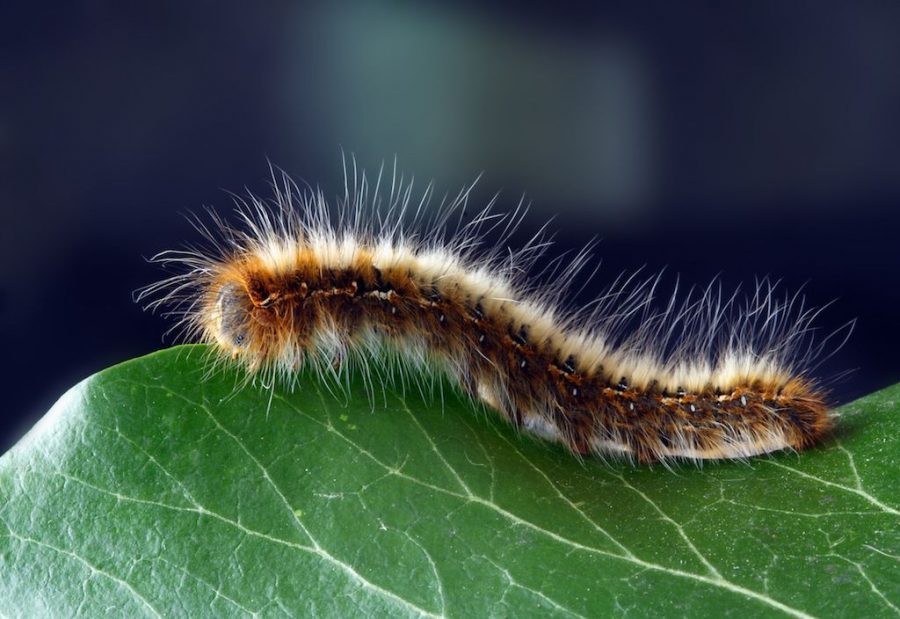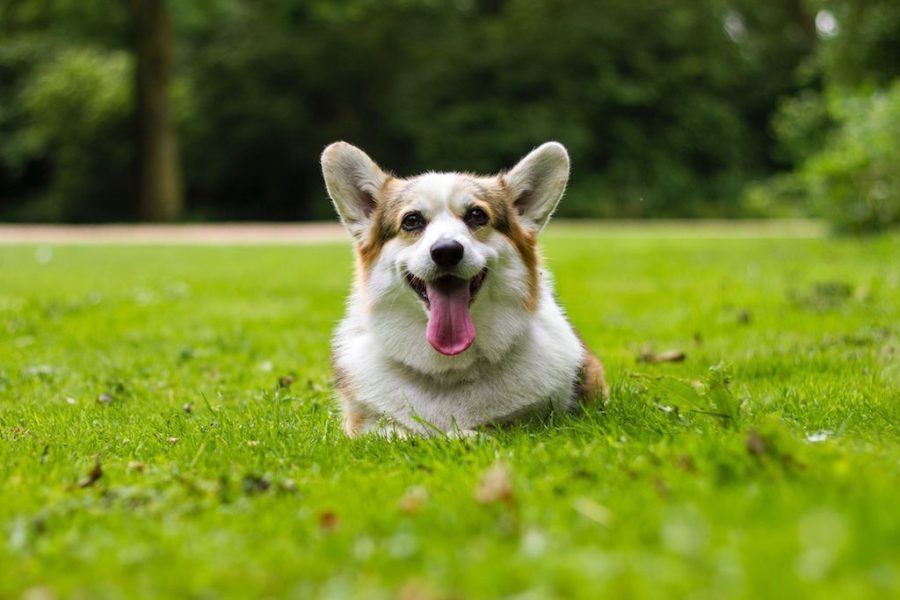When summer arrives, it is undoubtedly nice to spend whole days outdoors with a 4-legged friend. However, it is good not to underestimate the danger of pine processionary: it seems to be a harmless insect, but in reality these parasites are dangerous for dogs. Below you will find some indications that will help you to understand what to do in case your dog comes into contact with these larvae.
The name of this caterpillar refers to the fact that it usually moves in single line with its similars – like a procession, in fact. It is important to know that pine processionary larvae are also harmful for men, although to a lesser extent: the contact causes irritation and itching in the affected areas. The subject changes when it comes to dogs: if it comes into contact with pets, this parasite can have a lethal effect on them if measures are not taken immediately.
If you live in areas that are usually attacked by pine processionary and have a vegetable garden, you should pay particular attention to fruits and vegetables. In this case, in fact, it is important to check that there are no stinging hairs of this insect on vegetables. Moreover, after having picked the fruits, it is advisable to wash them very well to eliminate any residue before eating them.
What is pine processionary and why it is dangerous for pets

While in humans this insect causes only skin irritation and burning of the eyes, the effect of pine processionary on animals is quite different. If dogs and cats come into contact with these larvae, it is necessary to act quickly: in such a case, the animals could even risk losing their lives.
Before looking into how to treat our 4-legged friends, you should know exactly what pine processionary is. Also called thaumetopoea pityocampa, it is a caterpillar about 4 cm long that infests soil and (mainly young) trees. Processionary larvae almost always move in a single line forming a sort of “procession” – hence the name. The most dangerous part are the insect hairs, as they stick to animals while sniffing the soil and cause fearsome allergic reactions.
Once the larvae state is overcome, the pine processory turns into a very common and harmless moth that hovers in the air during the summer evenings.
Why are animals more affected by this insect than humans? When taken for a walk, pets have a habit of smelling the ground and everything around them. By doing so, dogs and cats can accidentally sniff or bite a pine processionary: its stinging hairs would then stick to the their tongue, which could have lethal consequences on their health.
In addition to cats and dogs, horses are also among the animals that are at greatest risk in case of contact with processionary larvae.
In order to reduce the risks caused by this caterpillar, disinfestations are carried out every year in Italy. However, they are not 100% effective: when taking our pet for a walk, we must be very careful and take some measures, such as the muzzle, to prevent them from coming into contact with the processionary.
Processionary and dogs: which are the symptoms
Dogs are the most exposed animals to this danger, as they tend to smell and bite everything they find. While walking with your pet in parks or pine forests, you should pay close attention to how it behaves. Such places are the natural habitat of this lethal insect: processionary caterpillars usually nest on pines and oaks at the beginning of March – they even damage the trees that host them.

If the place where you live is usually infested with processionary caterpillars, it is advisable to walk your dog with a muzzle, to prevent him from eating these insects. In addition, these insects prefer to move during the night and in general during the cooler hours: avoid walking your dog during these times – otherwise take the appropriate precautions.
To recognize the symptoms of processionary, you must carefully observe if your pet has:
- Excessive salivation: if dogs start to give off a lot of saliva suddenly and very intensely, they are likely to have come into contact with or ingested one of the processionary hairs. Sometimes this intense drooling can be followed by vomiting and inflammation of the gastroesophageal junction;
- Swollen tongue: if they stick to the tongue of a dog, the hooked and stinging hairs of processionary caterpillars can cause real injuries. The resulting allergic reaction makes the animal’s tongue swollen, with a consequent risk of suffocation.
In order to limit the damage caused by contact with the pine processionary, it is essential to be able to recognize the symptoms presented by animals in good time. In fact, if ignored, these symptoms may have very serious and sometimes lethal consequences: besides tongue swelling, contact with the stinging hairs can lead to necrosis of the affected parts and subsequent loss of parts of the necrotic tissue.
The infection can also occur with other minor symptoms such as fever, diarrhoea, loss of appetite and signs of weakness of the pet. In these cases it is advisable to intervene quickly to save your 4-legged friend.
How to treat processionary in dogs
Walking the dog is not only a duty, but also a pleasure for the owner: it is a nice way to spend time with pets and play peacefully with them. Even those who live in areas particularly infested with processionary caterpillars deserve to enjoy the outdoors with their 4-legged friend: for this reason there are some solutions – such as muzzles – that can reduce the risk of contact with this fearsome insect.
Despite all precautions, pets may still come into contact with this insect. If the animal concerned is a dog, there are two options for treating the possible infection:
- Water and baking soda: if your dog has licked or swallowed this caterpillar, you must quickly remove the hairs from his mouth. You can do it manually or more conveniently by rinsing the animal’s jaws with a solution consisting of one litre of water and 2-3 tablespoons of baking soda. Simply use a large syringe without a needle to sprinkle the liquid into your dog’s mouth until all residues left by the insect are removed;
- Vet: the best solution is to take the animal immediately to the vet who will treat the dog through therapy to eradicate the infection caused by this insect.
There aren’t many DIY remedies for this type of infection. When it comes to processionary contamination, it is best to opt for a specific therapy provided by your vet.
And what about pine processionary in cats?
Like dogs, cats are used to being outdoors and wandering alone – even for a long time. For this reason they are exposed to various dangers such as conflicts with other cats and animals in general, disorientation and intoxication. Also in their case, one of the main threats is pine processionary.
Cats, too, like to smell their surroundings during their wanderings and this exposes them to the risk of coming into contact with processionary caterpillars. The symptoms of the possible infection are very similar to those found in dogs.
Cats that inadvertently come into contact with or ingest one of these insects show symptoms similar to those of an allergic reaction. Excessive salivation and a swollen tongue are the most obvious consequences, together with the risk of suffocation. Other side effects are fever, vomiting and inflammation of the mouth, stomach and esophagus.
When it comes to processionary and cats, it is important to be alert at all times. Neglecting the symptoms can have serious consequences, such as necrosis of the affected tongue parts and their subsequent loss; in other cases, if no action is taken in time, the stinging hairs of the caterpillar can be fatal to kittens.
What makes the processionary extremely harmful to animals is the long, stinging hairs it is covered with. These hairs are similar to hooks and serve as a defense tool: they come off when the larva warns the danger with the intention of causing allergic reactions to anyone who approaches.
How to treat processionary in cats
Cats tend to lick themselves very often in every part of their body to clean themselves. In case of contact with a processionary, this tendency may further aggravate the situation. If the tongue of the cat is infected with the larva, this increases the risk of exporting the infection and damaging other parts of the body during the cat cleaning routine.
Unlike dogs, the only way to treat a processionary infection in cats is to consult a veterinarian. As soon as you recognize the symptoms, you should take your four-legged friend to your vet who will take the necessary therapy to heal him. A cortisone treatment is usually prescribed.
Each case, however, is different, which is why there is no single therapy to treat processionary infection in cats. The intensity and type of treatment depends mainly on the timeliness of the intervention. The best solution is to stem the negative effects by removing caterpillar hair from your animal’s tongue – even with water and baking soda washings – and take your little friend to the vet as soon as possible.
